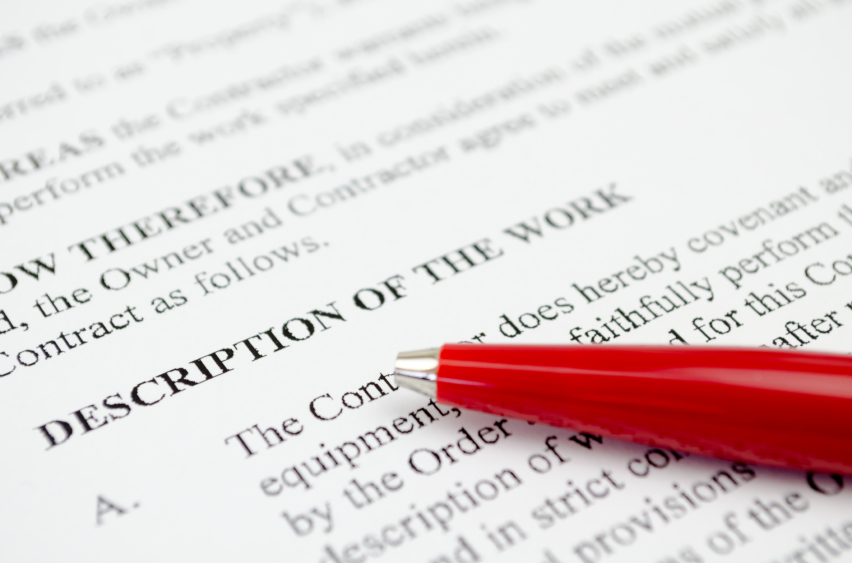Creating good job descriptions is critical for most organizations. That seems obvious enough, yet this is a simple thing that often gets overlooked—especially when it comes to keeping those job descriptions continually accurate and updated in an ever-changing work environment.
 |
Benefits of Good Job Descriptions
Here are some of the most important benefits of creating (and continually updating) accurate job descriptions. These job descriptions:
- Give applicants information about the requirements for the job in terms of required experience, education, and any other necessary skills. This in turn allows the company to have a more successful recruitment process by allowing a better-matched skill set for a given role.
- Help to create a roadmap for what skills are needed to move into new roles within the organization. This can in turn be used to create training programs to allow employees to advance. Similarly, job descriptions can be used in succession planning and skills gap analyses.
It’s the third HR Playbook from BLR®! Read the new guide, The Total Rewards Framework: Build Loyalty, Engagement, and Retention, and find out how to give employees what they most value.
- Create a written record of expectations for the role in terms of individual responsibilities. Accurate job descriptions also indicate where the role fits within the organizational hierarchy and provide information about the general employment conditions to be expected.
- Provide a basis for evaluating employee performance, even in the absence of a more formal performance evaluation system. (Alternatively, accurate job descriptions can also help in the creation of a more formal performance evaluation program, and they can be the basis for an individual’s initial goals and objectives in the system.)
- Create a point of comparison between different roles within the organization, which can help to determine the appropriate salary level and salary structure within the organization. This can also be compared externally when benchmarking salary levels.
- Give the organization a way to ensure all necessary activities are covered by one or more roles.
- Can be used as a basis for creating employee onboarding programs for each role.
- Allow the organization to remain legally compliant when done well. For example:
- Job descriptions help with Americans with Disabilities Act (ADA) compliance by clearly defining the essential job functions that all qualified applicants must be able to perform, thus providing a clear definition of who is qualified to perform the job. If an applicant is qualified, then the organization can look into reasonable accommodations when appropriate.
- The job description can be one factor that helps the organization assess whether the role should be classified as exempt or nonexempt for purposes of overtime calculations, based on the duties required.
- The essential functions can also be used as a basis for determining when an employee is fit for duty after a medical leave of absence.
- Impact employee morale by providing clear expectations. People perform better and are more satisfied when they know what is expected of them and feel they have the ability to meet those expectations.
With all of these benefits, it’s clear why it’s worth the time and effort involved in maintaining accurate and up-to-date job descriptions for every role. Does your organization have a review system in place to ensure that job descriptions are up-to-date at any given time?
Good job descriptions get new workers through the door. Good compensation practices keep them there. Take merit increase, for example.Merit increases are just a part of total employee rewards. It’s easy to think of total rewards as just “pay and benefits”—but there’s so much more to it than that. It’s the totality of the employment experience, including coworker culture, company ethos, and a great deal of other factors.
The big question is: What do employees really want, and how can employers give it to them? You’ll find the strategies you need in the new guide, The Total Rewards Framework: Build Loyalty, Engagement, and Retention.
This third HR Playbook from BLR provides practical guidance on everything from effective compensation strategies to innovative benefits to perks and rewards—and how HR can combine them to not simply retain, but engage.
Rewards are about more than just pay and benefits! Find out everything you need with the new HR Playbook, The Total Rewards Framework: Build Loyalty, Engagement, and Retention. Find out more or order here!
You’ll learn practical guidance on building a solid total rewards program, including:
- Implementing your total rewards framework
- Developing your compensation strategy
- Challenges and options regarding variable pay and benefits
- Perks and rewards (many at low or no cost)
- How to reward different categories of employees effectively
- And much more!
You value your employees—be sure they know just how much. Start strategizing today with The Total Rewards Framework: Build Loyalty, Engagement, and Retention.
